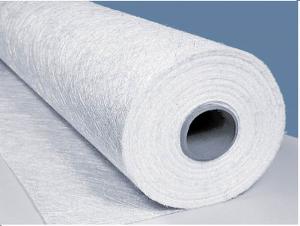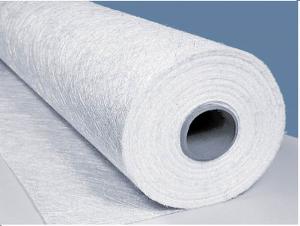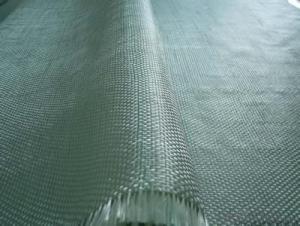E Glass Fiber CSM(Powder)
- Loading Port:
- China Main Port
- Payment Terms:
- TT or LC
- Min Order Qty:
- 22160 kg
- Supply Capability:
- 200000Kg Per Month kg/month
OKorder Service Pledge
OKorder Financial Service
You Might Also Like
1.Brief Introduction
E-Glass Powder Chopped Strand Mat is made of randomly distributed chopped strands held together by a powder binder.
It is compatible with UP, VE, EP, PF resins.
The roll width ranges from 50mm to 3300mm.
It is designed for use in hand lay-up, filament winding, compression molding and continuous laminating processes. Its end-use applications include boats, bath equipment, automotive parts, chemical corrosion resistant pipes, tanks, cooling towers and building components
2.Product Features
Fast breakdown in styrene
High tensile strength, allowing for use in hand lay-up process to produce large-area parts
Good wet-through and fast wet-out in resins, rapid air lease
Superior acid corrosion resistance
3.Product Specifications
Property | Area Weight | Moisture Content | Size Content | Breakage Strength | Width |
| (%) | (%) | (%) | (N) | (mm) |
Property | IS03374 | ISO3344 | ISO1887 | ISO3342 |
|
EMC80P | ±7.5 | ≤0.20 | 8-12 | ≥40 | 50-3300 |
EMC100P | ≥40 | ||||
EMC120P | ≥50 | ||||
EMC150P | 4-8 | ≥50 | |||
EMC180P | ≥60 | ||||
EMC200P | ≥60 | ||||
EMC225P | ≥60 | ||||
EMC300P | 3-4 | ≥90 | |||
EMC450P | ≥120 | ||||
EMC600P | ≥150 | ||||
EMC900P | ≥200 |

4.FAQ
Packaging:
Each Chopped Strand Mat is wound onto a paper tube which has an inside diameter of 76mm and the mat roll has a diameter of 275mm. The mat roll is wrapped up with plastic film,and then packed in a cardboard box or wrapped up with kraft paper. The rolls can be vertically or horizontally placed. For transportation, the rolls can be loaded into a cantainer directly or on pallets.
Storage:
Unless otherwise specified, Chopped Strand Mat should be stored in a dry, cool and rain-proof area. It is recommended that the room temperature and humidity should be always maintained at 15℃~35℃ and 35%~65% respectively.
- Q:How is fiberglass fabric woven?
- Fiberglass fabric is woven using a process known as plain weave or leno weave. In the plain weave method, the warp and weft yarns are interlaced at right angles, creating a simple crisscross pattern. This allows for a balanced and sturdy fabric structure. The leno weave technique, on the other hand, involves twisting adjacent warp yarns around each other in order to lock the weft yarns in place. This creates a more open and flexible fabric with increased stability. Both weaving methods are commonly used in the production of fiberglass fabric, depending on the desired characteristics and applications of the final product.
- Q:Can fiberglass fabric be used for making welding curtains?
- Yes, fiberglass fabric can be used for making welding curtains.
- Q:Are there any specific storage requirements for fiberglass fabrics?
- Fiberglass fabrics have specific storage requirements. It is highly advised to keep them in a cool, dry, and well-ventilated place to prevent moisture absorption and potential fabric damage. To avoid degradation of strength and appearance, it is crucial to store them away from direct sunlight, as prolonged exposure to UV rays can be harmful. Furthermore, it is vital to keep the fabrics far from heat sources or open flames to minimize the risk of fire. Additionally, it is essential to store them separately from chemicals, solvents, or oils that may cause staining or deterioration. By storing fiberglass fabrics properly, their quality and lifespan can be maintained.
- Q:How does fiberglass fabric compare to other types of fabrics?
- Fiberglass fabric stands out from other types of fabrics due to its unique properties. It is highly durable, fire-resistant, and can withstand extreme temperatures. Additionally, it is lightweight, flexible, and offers excellent insulation properties. However, fiberglass fabric is less comfortable compared to natural or synthetic fabrics, and it may be less breathable. Overall, its exceptional strength and resistance make it a preferred choice for applications requiring high-performance fabrics.
- Q:Which is more durable, stone cotton or glass cloth?
- No data connection, I design a variety of heating process, with some experience. You say, 160 degrees brittleness is generally a temperature measurement point and the heat source has a certain distance to show an illusion. The surface of the heat source may have reached a high temperature, and the heating medium is very low. If it is 160 degrees hot air heating, never crack. Welcome to the heating problem.
- Q:Is fiberglass fabric resistant to rodents?
- Yes, fiberglass fabric is generally resistant to rodents. The material is not appetizing to rodents and they are less likely to chew or gnaw on it compared to other materials such as wood or plastic. This resistance makes fiberglass fabric a popular choice for insulation in attics and crawl spaces, where rodents are commonly found. However, it is important to note that while fiberglass fabric can deter rodents, it is not completely rodent-proof. In rare cases, rodents may still attempt to chew or burrow through the fabric if they are highly motivated or if the fabric is damaged or compromised in any way.
- Q:What are the different weights or thicknesses available for fiberglass fabrics?
- There are various weights or thicknesses available for fiberglass fabrics, ranging from lightweight options like 3 oz per square yard to heavier options like 18 oz per square yard.
- Q:Is fiberglass fabric resistant to pests and insects?
- Yes, fiberglass fabric is generally resistant to pests and insects due to its synthetic composition and smooth surface, which makes it an unfavorable environment for them to thrive and cause damage.
- Q:Can fiberglass fabric be used for making sails or kites?
- Yes, fiberglass fabric can be used for making sails or kites.
- Q:Can fiberglass fabric be used for insulation in pharmaceutical facilities?
- Yes, fiberglass fabric can be used for insulation in pharmaceutical facilities. It is a commonly used material due to its excellent thermal insulation properties, fire resistance, and ability to withstand high temperatures. Additionally, it is lightweight, durable, and cost-effective, making it suitable for various applications in pharmaceutical facilities.
1. Manufacturer Overview |
|
|---|---|
| Location | |
| Year Established | |
| Annual Output Value | |
| Main Markets | |
| Company Certifications | |
2. Manufacturer Certificates |
|
|---|---|
| a) Certification Name | |
| Range | |
| Reference | |
| Validity Period | |
3. Manufacturer Capability |
|
|---|---|
| a)Trade Capacity | |
| Nearest Port | |
| Export Percentage | |
| No.of Employees in Trade Department | |
| Language Spoken: | |
| b)Factory Information | |
| Factory Size: | |
| No. of Production Lines | |
| Contract Manufacturing | |
| Product Price Range | |
Send your message to us
E Glass Fiber CSM(Powder)
- Loading Port:
- China Main Port
- Payment Terms:
- TT or LC
- Min Order Qty:
- 22160 kg
- Supply Capability:
- 200000Kg Per Month kg/month
OKorder Service Pledge
OKorder Financial Service
Similar products
New products
Hot products
Hot Searches
Related keywords





























